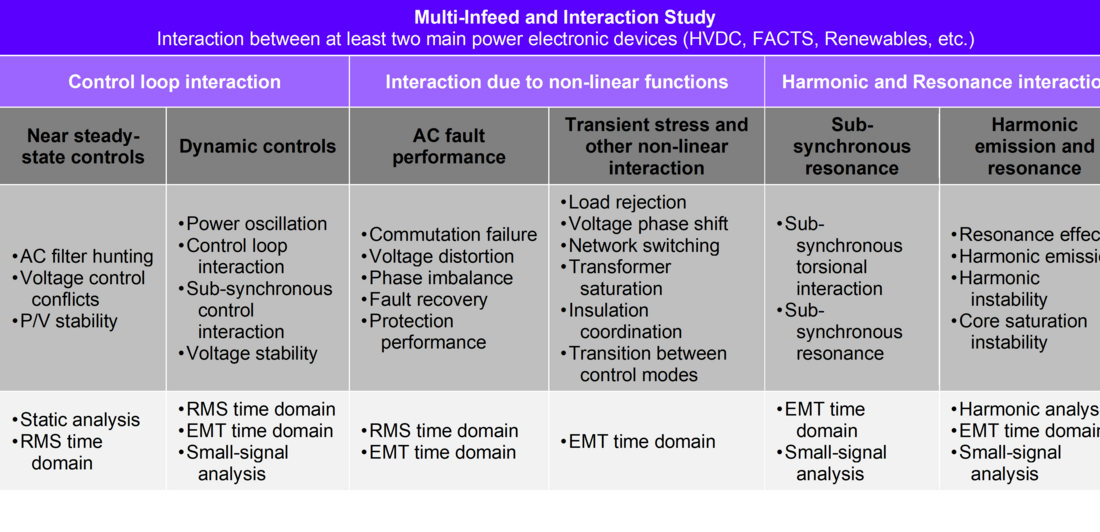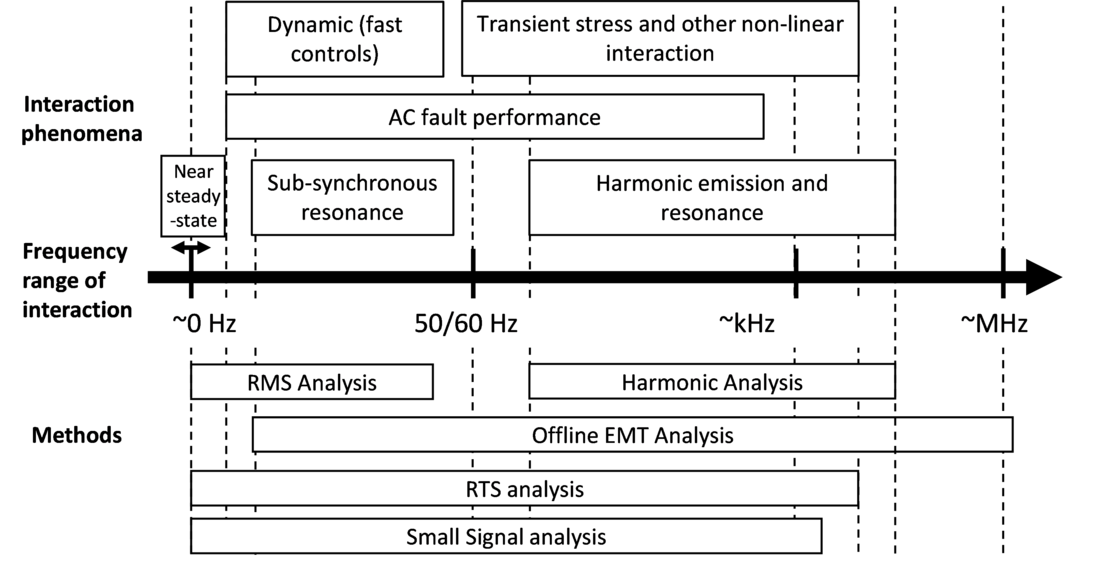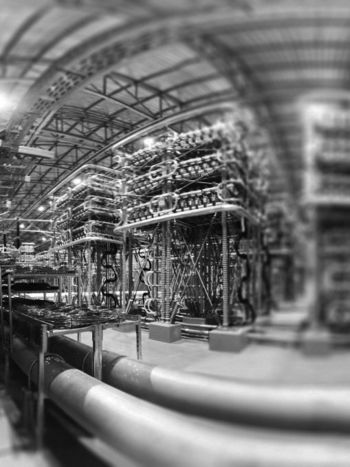Interaction between nearby VSC-HVDC converters, FACTs devices, HV power electronic devices and conventional AC equipment
Large integration of renewable energy sources (RES) and HVDC converters in power system have resulted in displacement of conventional power generation, lower system inertia and lower short circuit capacity of the AC power system. The AC grids integrates multiple converters in the close vicinity that potentially influence each other. The interoperability and stability of the system with massive amounts of converters is regarded as a key issue in future power systems and decarbonization of the industry. In recent years large-scale integration of solar, wind and HVDC converters, have resulted in several stability problems in the power system.
Members
Convenor (NO)
K. SHARIFABADI
Secretary (FR)
E.M. KARMANI
Secretary (BE)
P. DE RUA
A. PASHAEI (UK), A. FAZEL DARBANDI (CA), B. MARSHALL (UK), B. PONNALAGAN (UK), C. ZHAN (CN), E. PRIETO-ARAUJO (ES), H. SAAD (FR), K. WEYRICH (DE), L. ZENI (DK), L. MONJO (ES), L. F. BEITES (ES), N. KRAJISNIK (DE), O. ADEUYI (UK), O. JASIM (UK), P.SAMUELSSON (SE), P. MCNAMARA (IE), R. BLASCO GIMENEZ (ES), S. D'ARCO (NO), S. DENNETIERE (FR), S. HOEHN (DE), U. GNANARATHNA (CA), W. HUANG (CN)
Introduction
Interactions phenomena between VSC-HVDC converters and other power electronics devices or passive HV components installed on the network, can have a wide range of frequencies: from interarea oscillations, to sub-synchronous interaction (as SSRI and SSTI) and even to high frequency interaction (between 100Hz till several kHz). In addition, interactions due to non-linear behaviour such as transformer saturation, control non-linearity, etc. can also occurs.
Various RMS and EMT simulations tools and models from the converters and passive grid components are available. Through various works it has been documented that the tools and models representing the active and passive components have a major influence on the study result.
This Technical Brochure (TB) focuses on the interaction between VSC-HVDC converters and the other power electronics or passive HV devices.
Chapter 1 - Background
Chapter 1 includes the motivation and needs for recommendations on analysis, modelling and mitigation of interactions between VSC-HVDC converters and with the rest of the system.
In recent years, large-scale integration of solar, wind and HVDC converters resulted in several stability problems in power systems. Identifying and de-risking these stability issues is challenging without specific guidance. Consequently, ensuring interoperability and stability in systems with a significant presence of converters is considered a major concern for future power systems and a critical challenge that must be addressed to facilitate power system decarbonization.
Additionally, the rise of power electronic equipment connected to the electric grid has led to interaction and stability issues that require adequate address. Table 1 shows the proposed classification of multi in-feed and interaction studies used through the Technical Brochure.

Table 1 - Classification of multi-infeed and interaction studies
Therefore, the main objective of the technical brochure is to provide recommendations on analysis, modelling and mitigation of interactions between VSC-HVDC converters, other converters and the grid, throughout the project lifecycle, including guidelines on screening studies and selection of the area of study.
Thus, the Technical Brochure provides recommendations on:
- Methodologies to analyse and to assess control interactions in meshed AC networks with multiple converters, including study area selection.
- Required data and modelling recommendations to analyse such interactions and verify that the models used are a valid representation of in-service behaviour.
- When to perform such studies at various life-cycle stages of a VSC-HVDC or FACTS project.
- Suitability of different studies depending on the state of a VSC-HVDC or FACTs project life cycle.
- Simulation (offline and real time) tools and models that can impact the study results.
- Confidentiality issues and model exchange for multivendor systems.
- Risk assessment and evaluation of potential solutions.
Chapter 2 - Types of models and methodologies for different interaction studies
Chapter 2 focuses on the different types of models and methodologies used to conduct interaction studies between HVDC, power electronic devices and the AC grid. These studies are essential for assessing the stability and performance of power systems, especially those incorporating large-scale renewable energy sources (RES) and High Voltage Direct Current (HVDC) converters.
Figure 1 illustrates the essential interaction phenomena provided in Table 1 and methods and tools that are typically employed for the respective studies. It must be noted, that the proposed classification is based on the collection of the best practice in the industry.

Figure 1 - Overview of methods for interaction phenomena
The chapter begins by outlining the main types of simulation tools employed in these studies: time-domain tools, small-signal analysis and harmonic emissions methods.
Time-domain simulations are categorized into Root Mean Square (RMS) and Electro-Magnetic Transient (EMT) tools. RMS tools or phasor-domain transient (PDT) models, are utilized for system stability for large interconnected systems, including electromechanical oscillations, angle-stability of synchronous generators and frequency stability. For phenomena with frequency up to few Hz and outside the range the network’s model fidelity diminishes rapidly. Conversely, EMT tools are designed for detailed transient analysis, capturing accurately the interactions that occur over shorter timescales. These EMT simulations can be performed either in real-time or offline, each offering different but complementary benefits. Real-time EMT simulations are crucial for hardware-in-the-loop testing with real C&P cubicles, whereas offline EMT simulations, despite being computationally intensive, allow for in-depth analysis of specific scenarios.

